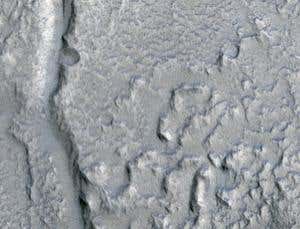Astronomers and space agencies worldwide are observing asteroid 2024 YR4, a near-Earth object whose chances of impacting our planet in 2032 have slightly increased according to the latest calculations. The asteroid’s probability of collision now sits at 2.3%, a minor yet noteworthy revision from earlier estimations. To contextualize, this still leaves a 97.7% chance that the asteroid will pass by Earth without causing any harm.
Asteroids are among the most closely monitored objects in our solar system, and their potential to interact with Earth draws considerable public interest. Asteroid 2024 YR4 first garnered attention early this year when astronomers flagged its trajectory for its proximity to Earth. Initial assessments placed its impact risk at roughly 1%, after which refined observations raised the likelihood progressively.
At present, experts emphasize that the margin for error in estimating trajectories diminishes as more observational data is collected. NASA, the European Space Agency (ESA), and other organizations closely track such celestial objects using ground-based telescopes, radar imaging, and advanced predictive tools. The goal is to calculate the asteroid’s precise path and to identify how close it will get to Earth.
2024 YR4 is estimated to measure between 130 and 300 feet in diameter. This size categorizes it as a mid-sized asteroid—significant enough to cause localized damage if it were to impact Earth, but not large enough to generate global-scale consequences. By comparison, the asteroid linked to the Tunguska event in 1908, which flattened an estimated 80 million trees over a 2,150-square-kilometer area in Siberia, was within this size range.
Despite the rising odds of impact, scientists urge the public not to panic. The probability, although slightly higher, still heavily favors a scenario where the asteroid misses Earth entirely. Additionally, the margin for refining the data remains substantial with years of continued monitoring ahead. As 2024 YR4 approaches, astronomers will continue to update their predictions with new information. Each observation narrows the uncertainty and provides space agencies valuable data to devise strategies in case interference becomes necessary.
In the event of a credible high-impact risk, planetary defense initiatives are prepared to respond. Technological advancements, such as those demonstrated by NASA’s Double Asteroid Redirection Test (DART) in 2021, show promise. The DART mission successfully altered the orbital trajectory of a smaller asteroid, illustrating the potential to deflect hazardous objects using small-scale kinetic impactors. Furthermore, tracking systems like NASA’s Sentry and ESA’s NEODyS are designed to detect possible Earth-bound asteroids years ahead of potential impacts.
Although the situation demands vigilance, the general consensus among experts suggests more reason for hope than concern. With years remaining before any projected approach, scientists will utilize the time to improve tracking data, test deflection methods, and develop contingency plans for various outcomes.
For now, the world can rest assured that while the asteroid’s increased impact probability is a stark reminder of the dynamic nature of our solar system, the measures in place are deemed sufficient to mitigate potential risks. Collaboration among global space agencies ensures that any future discoveries regarding asteroid 2024 YR4 will be swiftly communicated.
As we look to the future with a mix of apprehension and preparedness, the story of asteroid 2024 YR4 underscores the ongoing need for vigilance in space exploration and planetary defense. It also highlights the ways in which humanity’s scientific knowledge and technological innovation can unite to tackle potential cosmic challenges head-on.



